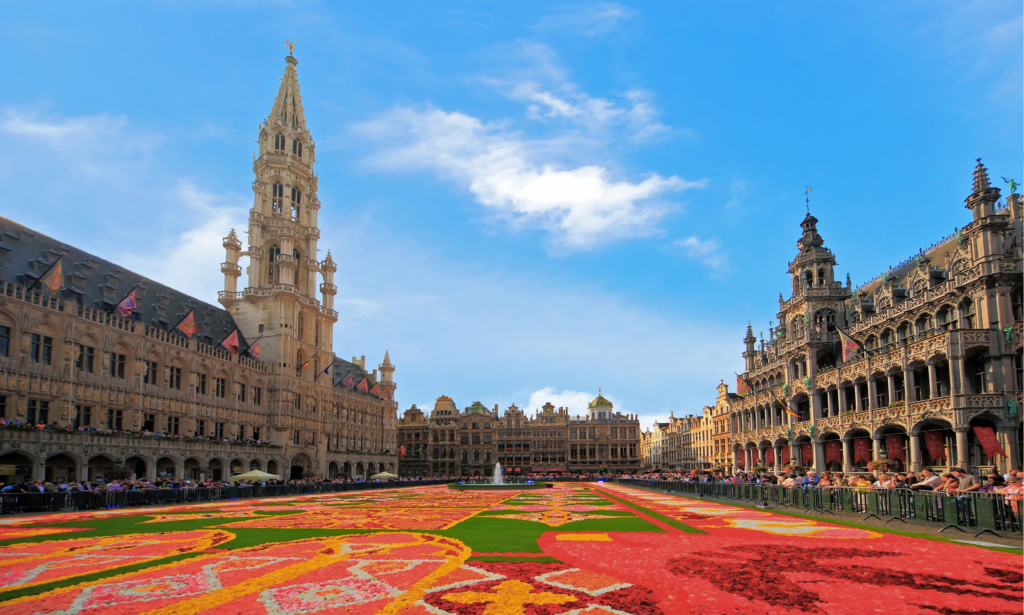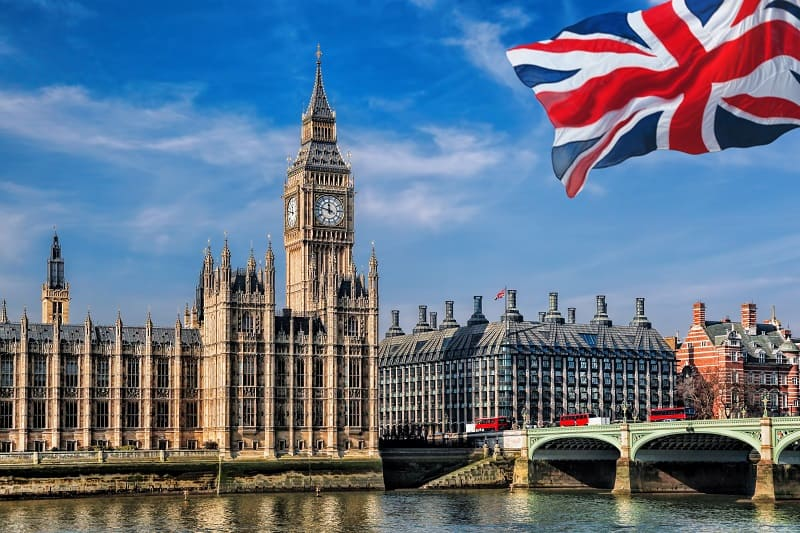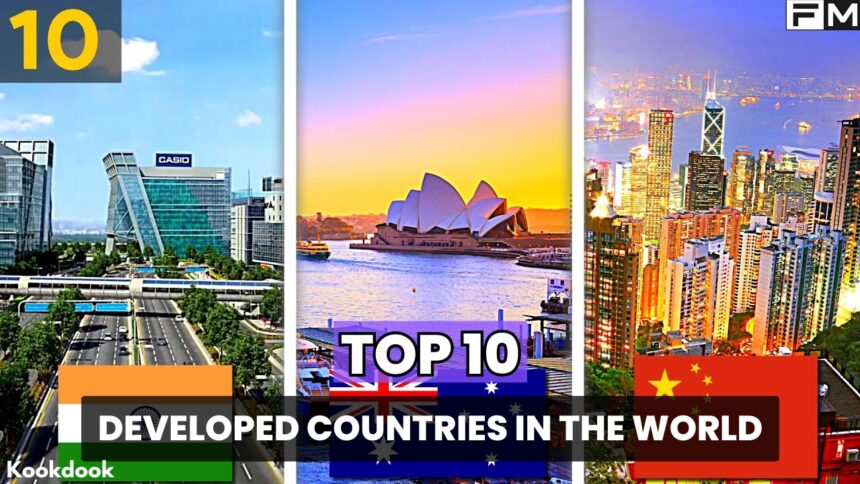Measuring the distinction between developed and developing countries poses a considerable challenge. While Gross Domestic Product (GDP) plays a role in this determination, several other indicators also come into play. Different individuals may place varying degrees of importance on certain factors, leading to differing perspectives on development. Nevertheless, socio-economic development stands as a pivotal factor in categorizing a country as developed. Once a country fulfills specific socio-economic requirements, it earns the status of a developed nation.
1. Australia

Australia stands as a nation with a superior quality of life compared to many others worldwide. Being one of the wealthiest countries in the Asia Pacific region, it has undergone significant economic growth over the past two decades. According to statistics from the Organization for Economic Cooperation and Development, Australia’s happiness rating sits at an impressive 7.3 out of 10, surpassing the global average of 6.5. The country’s status as a developed nation is justified by its advanced level of industrialization and the provision of top-notch healthcare services for its citizens. Remarkably, Australia boasts one of the world’s lowest infant mortality rates at 3.3 per 1000 live births, contributing to an impressive life expectancy rate of 85 years, attributed to its exceptional healthcare system.
2. Belgium

Belgium sets an exemplary standard for the quality of life in numerous European nations. With a life expectancy rate of 81.6 years, a quality of life rating at 6.9 out of 10, and an average education duration of 19.8 years, the country prioritizes its citizens’ well-being and education. The service sector plays a significant role in Belgium’s thriving economy, contributing approximately 70% of its GDP. Despite limited natural resources, Belgium efficiently imports raw materials and exports a diverse range of manufactured goods. This success is attributed to its strategic central geographic location, extensive transportation network, and substantial commercial and industrial base. Additionally, the nation maintains a commendably low infant mortality rate of 10 deaths per thousand live births.
3. Canada

Canada, recognized as the 10th largest economy globally, owes its immense GDP to its abundant natural resources, such as oil, coal, and gas. Leveraging these resources, the country not only fulfills its energy needs but also exports them, bolstering its economy. Remarkably, Canada has emerged as a global leader in the utilization of renewable energy sources, despite its rich reserves of non-renewable resources.
In terms of healthcare, Canada boasts a well-reformed system, extending free medical care access to nearly all residents across its 43 provinces. This dedication to healthcare is evident in its impressive life expectancy rate of 82 years and a low infant mortality rate of 10 deaths per thousand live births. As the possessor of the world’s third-largest oil reserves, Canada has developed a robust energy extraction industry. Surprisingly, a significant portion of its energy supply (18.9%) originates from renewable sources, with water accounting for 59.3% of the country’s power generation. Additionally, Canada shares a strong trade alliance with the United States, with three-quarters of its exports directed towards the US annually. Through these close ties, Canada continues to grow and emerge as a leading global economy.
4. France

France stands as an economic powerhouse, boasting the 7th largest GDP in the world as of 2019. Its prosperity can be attributed to various factors, including extensive tourism, a well-developed industrial sector, and a robust pharmaceutical industry. The French government has undergone partial or complete privatization of several renowned enterprises, while retaining significant control over the military, electricity, and transportation sectors.
Regarding healthcare, France excels in providing universal access to treatment while empowering patients with autonomy. This well-structured system is highly regarded by its citizens, evident in the nation’s impressive life expectancy rate of 83 years and remarkably low infant mortality rate of four deaths per thousand live births. France’s high level of industrialization contributes to minimal unemployment, with a rate of only 8.34% as per 2020 data. Notably, tourism plays a crucial role in France’s GDP, with the nation attracting a considerable number of tourists throughout the year.
5. Germany

Germany proudly stands as the strongest economy in the entirety of Europe, securing the 4th position worldwide in terms of GDP. A key contributing factor to this status is its highly skilled and trained workforce, renowned for producing top-quality goods such as automobiles, electronics, machinery, and pharmaceuticals. In 2019, Germany earned the distinction of being the world’s second-largest surplus economy, following closely behind China in terms of import and export.
The nation’s commitment to healthcare is evident in its universal healthcare system, which extends to all citizens. With a life expectancy rate of 81 years and an impressively low infant mortality rate of three deaths per 1000 live births, Germany demonstrates its dedication to the well-being of its people. Every German citizen is required to enroll in a nonprofit illness fund that covers a majority of medical operations and prescriptions. Notably, only 0.3% of German citizens reported unmet medical needs as per 2017 statistics. Additionally, Germany boasts a highly qualified workforce, propelling the nation to its status as a leading exporter of various manufactured goods, including automobiles, chemicals, and other equipment types.
6. Italy

Italy holds the impressive 6th position in terms of GDP, primarily attributed to its advanced manufacturing sector. The nation’s specialization in manufacturing high-quality luxury goods, such as stylish accessories, gourmet food, and high-tech automobiles, contributes significantly to its robust economy.
In Italy, over 25 million people, accounting for nearly 71% of the population, find employment in the service sector, indicating the country’s overall development. The nation provides advanced medical services and accounts for 2.28% of the world’s total wealth. Italy’s business class benefits from modern commercial banking services.
With a life expectancy of 83 years and an infant mortality rate of 7 deaths per thousand live births, Italy exemplifies its dedication to healthcare. However, it is important to acknowledge the disparities within the country, with the northern region being more developed and industrialized, while the southern part faces relatively lower development.
7. Japan

Despite its smaller size compared to economically developed countries like France or Germany, Japan claims the title of the world’s 3rd richest nation in terms of total GDP. This accomplishment is primarily credited to its thriving service industry, where approximately 72% of the population finds employment, while only 3% work in agriculture.
Japan’s lack of natural resources necessitates heavy reliance on imports. The country stands as the largest net buyer of food, liquefied natural gas (LNG), and coal. Nonetheless, Japan maintains an impressive average life expectancy of 84 years, coupled with an exceptionally low infant mortality rate of only two deaths per thousand live births. Despite its modest size, Japan proudly holds the third-largest economy, with its GDP exceeding 5 trillion dollars as of 2019 data. This economic strength is a result of its industrial and export-oriented economy, which exhibits strong interlinks with government corporations. Another crucial factor contributing to Japan’s success is its sophisticated technology. The implementation of new policies by former prime ministers has further boosted economic growth, particularly in the last decade of the 1990s and beyond, overcoming the challenges of the worldwide recession.
8. Switzerland

As of 2019 statistics, Switzerland holds the impressive fourth position among the top 10 highest economies in the world based on its GDP per capita. The country’s prosperous economy owes much to its highly trained workforce, efficiently compensating for its relatively small labor force.
Switzerland’s economy benefits from various sectors, including financial services, pharmaceuticals, manufacturing, metals, technology, electronics, and chemicals. The nation prides itself on providing a universal healthcare system, contributing to an average life expectancy rate of 84 years as of 2019 data. However, despite its commendable healthcare system and high life expectancy rate, Switzerland faces an abnormally high infant mortality rate of ten deaths per thousand live births.
9. United Kingdom

The United Kingdom holds the distinction of being the first industrialized country. As of 2019, it stands at the 6th position in terms of GDP. Despite facing a decline in its oil and natural gas reserves, the country sustains its GDP through significant reliance on its thriving service sector, particularly in business services, banking, and insurance.
Although comprehensive data on the healthcare system is limited, the UK boasts an average life expectancy rate of 81 years. However, it faces a notably high infant mortality rate of 11 deaths per thousand live births. In 2016, the British people voted to leave the European Union, leading to the widely known event called Brexit. As a result, the two entities lack a valid trade agreement. While a temporary agreement was reached in the European Parliament on 28 April 2021, further decisions are still pending.
10. United States of America

The United States of America proudly holds the top position in terms of GDP, making it the richest nation globally, accounting for 16% of the world’s wealth. Renowned as the world’s largest trading country, the USA actively engages in extensive exports and imports, ranking as the greatest importer and the second-largest exporter of manufactured goods. As of 2021 data, the USA boasts the third-largest military globally.
Despite a very high HDI score and significant wealth among all nations, the USA faces challenges, including a relatively high poverty rate compared to other industrialized countries and healthcare services that may not meet expectations. The country reports an average life expectancy rate of 79 years, accompanied by a relatively high infant mortality rate of 11 deaths per 1000 live births, as of 2019 statistics. The service sector, encompassing professional and business services, real estate, insurance, and banking, significantly contributes to the nation’s GDP. Notably, the country’s growth is fostered by its flexible approach to company investments and foreign direct investments.






